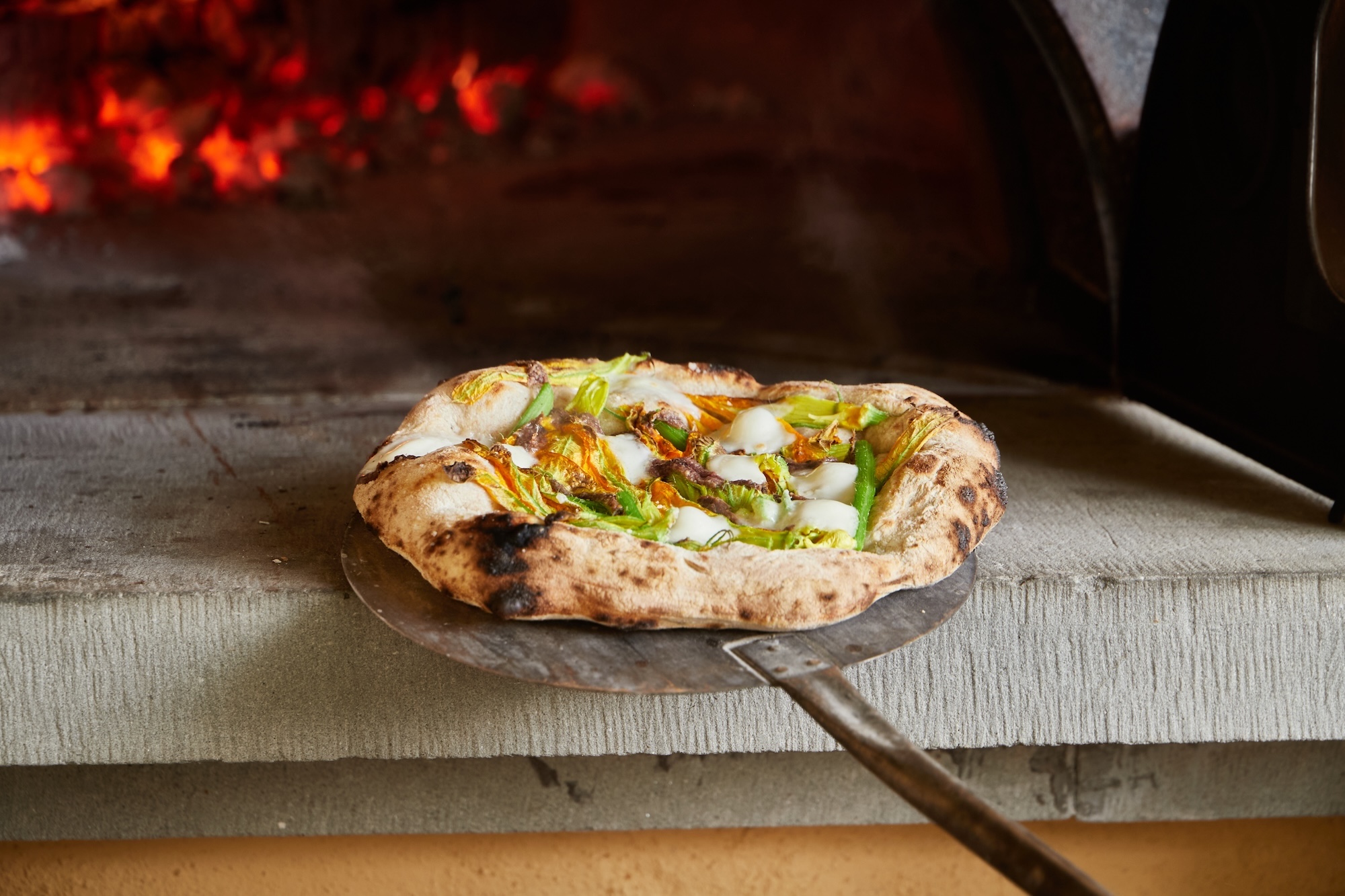In summer 2024, we traveled to Poggio La Noce, a small, family-run winery tucked into the hills outside Florence, to help bring a dream to life: designing and photographing a cookbook rooted in the gardens and vineyards.
We first visited the winery in 2022. It was an amazing visit that completely changed the way we thought about what we eat and drink. The wines, the people, the food: it all stayed with us. After experiencing Enzo’s home cooking that first time, we gently encouraged the idea of a book. Two years later, that idea turned into a finished cookbook we helped bring into the world.
This is what it looked like behind the scenes. From start to finish, our role wasn’t just to shoot or lay out the book—we were partners in shaping the story. For Enzo, that meant having a team who could translate his voice, cooking style, and setting into something tactile and lasting. For any chef or food brand looking to tell a story through a cookbook, that kind of creative partnership is key.
.jpg)
The Photography Process: Shooting a Cookbook in Real Time
We had five days at Poggio La Noce to photograph 40 recipes, and just one person, the author, cooking them. As cookbook photographers and designers, we came prepared with a full production toolkit (Google Sheets, Airtable schedules, a visual moodboard, and a photography shot list) ready to move quickly but flexibly. Having systems in place allowed us to focus on storytelling without losing track of logistics.
But on the first day, we tossed all that aside.
Why? Because when the work is alive—rooted in place, driven by rhythm, unfolding in real time—you follow it.
Each morning began in the kitchen. Enzo would prep a few dishes, Colin recorded notes, and I followed the movement with my camera, capturing not just the plated dishes but the hands, the tools, and the rhythm of a real working kitchen.
This is exactly the kind of editorial cookbook photography we love: alive, unscripted, and rooted in place. By working on-location, embedded in the environment, we’re able to create food photography that feels narrative, not staged.
If you're wondering what it's like to hire a cookbook photography team for an immersive, on-location shoot, this was it: focused, collaborative, and grounded in real life, not just the plate.

Designing the Book: Collaboration from Day One
While I started editing photos throughout our travels, the real work began once we were home. Colin began building the layout in InDesign while I refined images. Having both design and photography processes happening side by side was a game changer.
Why?
- I could see how the photos fit the page as he was laying them out.
- I understood how he made room for text, illustrations, and flow.
- I could offer alternates or crop images differently based on layout needs
This kind of real-time collaboration made the book better. And it made me better, too, as a photographer and as a creative partner. Working as a team across disciplines—Colin on layout and structure, me on visual storytelling—lets us create a book that feels cohesive from the start. For brands and individuals looking to hire one team to handle cookbook photography and design, this saves time and preserves vision.
Seeing the layout evolve in real time also helped us make strategic decisions, like where a close-up of a dish felt too tight, I could reframe for more negative space. Where text needed room to breathe, I adjusted the image crop. This kind of real-time collaboration between photographer and designer is something we offer to every editorial project, and it leads to smarter, more integrated results.
If you're building a cookbook or visual editorial and wondering whether to hire a team that handles both photography and design: this is your sign. The process is smoother. The work is more integrated. The final result feels whole.
14.jpg)
22.jpg)
19.jpg)
From Layout to Print: Finalizing the Cookbook
After we finalized the layout, we worked with a local printer in Chicago who helped us navigate proofing and paper selection. Having a thoughtful, local print partner made all the difference in how the finished cookbook felt in hand, ensuring it felt weighty, elegant, and completely rooted in place.
Seeing the final book arrive in the mail was surreal. After months of dreaming, weeks of cooking, and hundreds of images, we finally got to hold it. A project built on food, friendship, and creative trust, printed, bound, and real.
7.jpg)
12.jpg)
11.jpg)
42.jpg)

Interested in Creating a Cookbook or Custom Food Publication?
This is what we do. Dai Dai is a storytelling studio specializing in:
- Cookbook photography and design
- Editorial campaigns for food and wine brands
Custom publications and storytelling experiences
We bring together writing, photography, and design to help brands tell stories with soul—and make beautiful, tangible things in the process.



